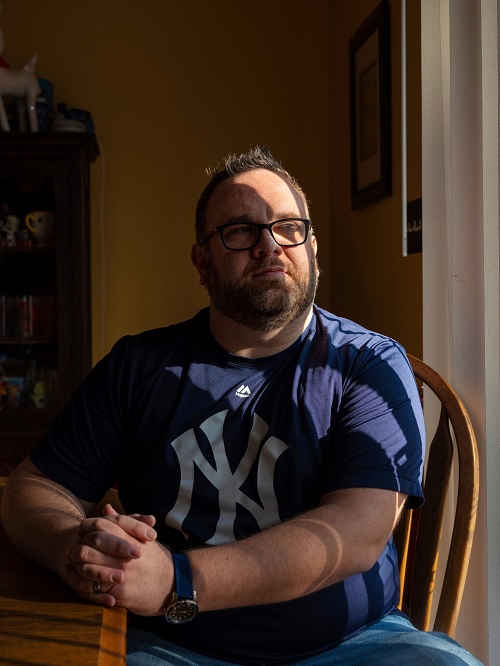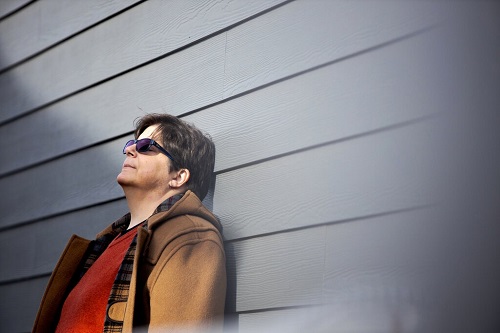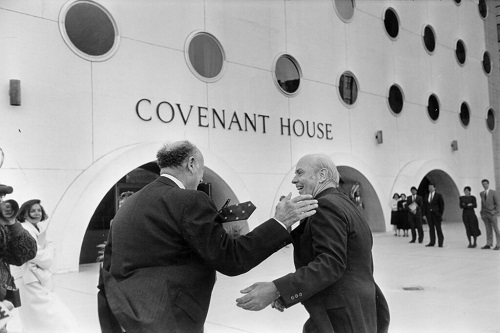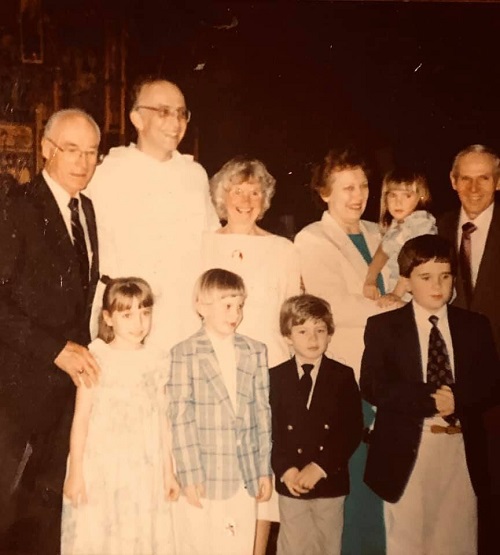|
A Vanishing Priest, a Wall of Secrecy and a 25-year-old Abuse Case By Jenn Morson
Only years later did Mr. Schlenz come to understand that Father Jones had abused him. He wanted to press charges, though by then the statute of limitations had passed. But the New York State Child Victims Act, which allows for victims to file civil lawsuits against their abusers regardless of how long ago the abuse occurred, has given Mr. Schlenz a chance to make his case. In August 2019, he initiated a legal action against Father Jones and the Dominican Friars Province of Saint Joseph. But the religious order had already exonerated Father Jones following its own internal investigation just two months earlier. A complicating factor here is that Father Jones does not report to the Archdiocese of New York, which has been part of the Roman Catholic Church’s effort to make reporting and investigating clergy abuse more transparent. He is an order priest, which means that the Dominicans — not the Archdiocese of New York — were responsible for initially investigating Father Jones in late 2018, following a tip from another Dominican priest whom Mr. Schlenz had confided in. But orders have their own ways, often private and murky, of doing things. So, after the Dominicans cleared Father Jones, and before the Child Victims Act case was filed against him, he disappeared. Mr. Schlenz’s case entered its discovery phase last fall. Joseph D’Avanzo, Father Jones’s lawyer, denied all of the allegations and refused to discuss the priest’s whereabouts. Multiple requests to speak with leaders of the order have been rebuffed. But in an email this month, the vicar for child protection of the Dominicans, the Rev. Albert Duggan, responded to a request from The Times. “Because this involves a matter in litigation, the province is not able to make any comment at this time,” he wrote. “The worldwide moving around of religious order priest offenders is the biggest unknown scandal,” said Jeff Anderson, who specializes in clergy abuse cases, including several involving religious order priests that were filed under the Child Victims Act. “We have found offenders in South America and Africa.” Close to one-third of the 464 Child Victims Act cases against priests involve religious orders, like the Dominicans, Franciscans and Redemptorists. These are autonomous organizations that have Vatican approval but that operate independently, with their own hierarchies and protocols. They nonetheless often provide priests to work at diocese churches, as was the case of Father Jones’s being stationed at St. Catherine in the 1980s. For those not versed in Catholic vocabulary, a diocese is an ecclesiastical district within the Catholic Church. It is defined by geographic boundaries and overseen by a bishop who reports up a chain of command to the pope. A religious order, on the other hand, is not structured geographically; its members work in communities all over the world, including at diocesan churches. This means that order priests who are stationed at such churches function essentially as independent contractors; bishops have no control over them. Only in very extreme cases will the pope intervene in religious order issues. Orders handle their own investigations, which to the outside eye can appear confusing, secretive and time-consuming. Bridget Lyons, who says she was abused by a Redemptorist priest in New York and Florida in the 1980s, has waited over 25 years for closure. In 1994, she and her younger brother, Brendan Lyons, accused the Rev. Jack Kennington of abusing them. Only Mr. Lyons was able to pursue a case, however, because of the statute of limitations. It was settled in 2001 for an undisclosed amount, and Father Kennington never admitted guilt.
Before the settlement, however, Father Kennington admitted during a deposition to playing strip poker with both children. While Ms. Lyons is now working with Mr. Anderson to pursue a new case against Father Kennington under the Child Victims Act, he remains a priest in good standing with the order and lives in a Redemptorist residence in Brooklyn. (Calls to the residence, as well as to the communications office for the Redemptorists, were not returned.) Mr. Anderson, the lawyer for Ms. Lyons, is no stranger to the frustrations of cases involving religious orders. He has built his career representing clergy abuse survivors. One of his more high-profile Child Victims Act cases involves the Rev. Bruce Ritter, the now-deceased Franciscan founder of Covenant House, a nonprofit in Manhattan that helps homeless youth. Darryl Bassile, Mr. Anderson’s client, said that when he was living at Covenant House in the 1970s, Father Ritter sexually assaulted him. In 1990, Father Ritter was forced out of his organization because of multiple sexual abuse and financial accusations. But he was never defrocked, nor were criminal charges ever filed against him. The most extreme action taken by the Franciscans was to demand that he undergo counseling. He refused, choosing to resign from the order in 1991 “on his own initiative and with the blessing of his Franciscan superiors in the United States and in Rome,” according to the head of the order at the time. He then joined an overseas diocese and remained a priest until his death in 1999.
“You enter into this covenant family, and they promise for life to support you,” said Patrick Wall, a former Catholic priest who works with Mr. Anderson. “Consequently, it’s like a life raft. And they don’t want to push anyone off.” Since Father Jones was exonerated by the Dominicans, his whereabouts has been a mystery. Phone calls to the top office of the order in Rome were referred back to the prior provincial (regional leader) in New York City, the Rev. Kenneth Letoile, the same man who cleared Father Jones of any wrongdoing and who has not responded to repeated requests for an interview. In 1988, Timothy Schlenz began his studies with Father Jones at St. Catherine between morning and evening Mass. During one of their sessions, Father Jones told him about a friend who had cancer, “and how he knew how to check for it,” he said. For the next few months, touching took place along this theme, often in the priest’s private quarters, Mr. Schlenz recalled. In March 1989, Timothy received the Sacrament of Penance. During this first confession, overseen by Father Jones, Timothy confessed the touching sessions to the very man who had encouraged them. “In case it was a sin,” Mr. Schlenz said. The following year, when it was time for Timothy’s younger brother Joseph to study with Father Jones, Timothy refused to leave Joseph alone with him. He never explained to his parents why, or what had happened to him.
After Joseph received his first communion in 1990, Father Jones was relocated, and Timothy, 10, began seeing a psychiatrist, who told his parents that Timothy was depressed. By the time he was married and starting a family, Mr. Schlenz no longer understood the abstract flashbacks that still haunted him. It wasn’t until 2013, when his little brother asked if he remembered studying with Father Jones in Manhattan, that it all started to click. Over the next several years, Mr. Schlenz committed himself to intense therapy sessions, where he also dealt with even earlier memories of being abused by a Catholic priest in Newark, the Rev. David Ernst, years before Timothy met Father Jones. The Ernst case, part of a well-publicized class-action suit that included Mr. Schlenz, was successfully settled in 2018 (the Archdiocese of Newark admitted to wrongdoing and added Father Ernst, who died in 1988, to its list of credibly accused clergy). But Mr. Schlenz felt alone and unsupported when it came to Father Jones and the Dominicans. In late 2018, Mr. Schlenz disclosed his memories to another Dominican priest, who reported the complaint to the order. Father Jones was placed on administrative leave, and an internal investigation was initiated, concluding in June 2019 in the form of a letter by Father Letoile exonerating Father Jones. “There was not a semblance of truth in the allegation,” the letter said. It recommended that “Father Jones be publicly restored to ministry.” The statement was followed by a note from Father Jones. “I tried to remember to pray for my accuser,” he wrote, “and to offer up what I was being given to suffer in reparation for the sins of Christians and the purifying of the church.” Then, Father Jones vanished. (Recent court documents from the Schlenz case list him as a New York resident.) For several years now, the Archdiocese of New York has offered the Independent Reconciliation and Compensation Program for abuse survivors. But for victims of religious order priests, compensation through funds like this is not available. “Religious orders have their own policies and procedures for responding to allegations of abuse,” said Joseph Zwilling, director of communications for the archdiocese. For Timothy Schlenz, as well as others alleging abuse by religious order priests, the Child Victims Act is their only recourse. Correction: Jan. 30, 2021 A version of this article appears in print on Jan. 31, 2021, Section MB, Page 1 of the New York edition with the headline: Inside the Secrecy of Religious Orders.
|
.
Any original material on these pages is copyright © BishopAccountability.org 2004. Reproduce freely with attribution.



